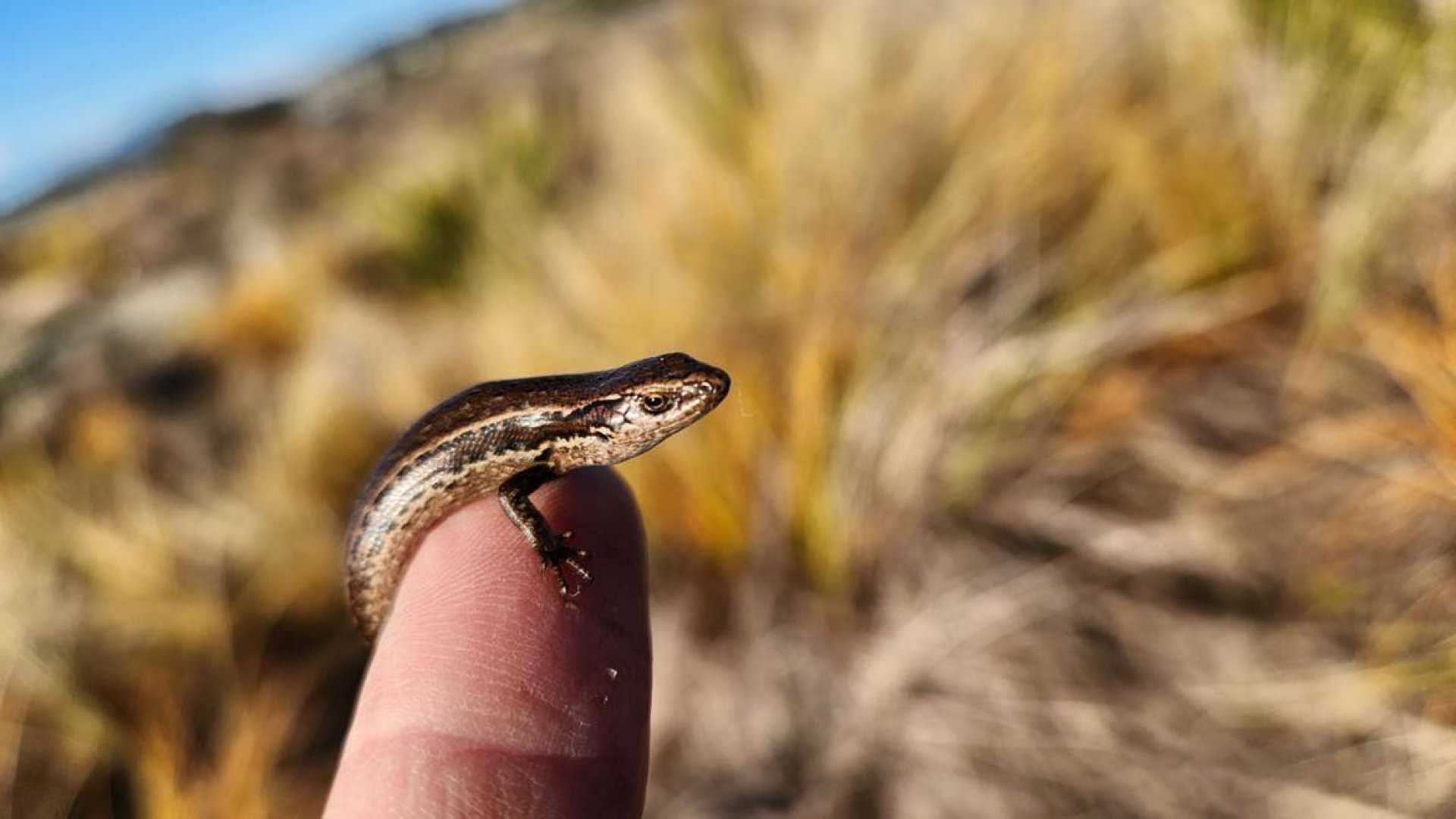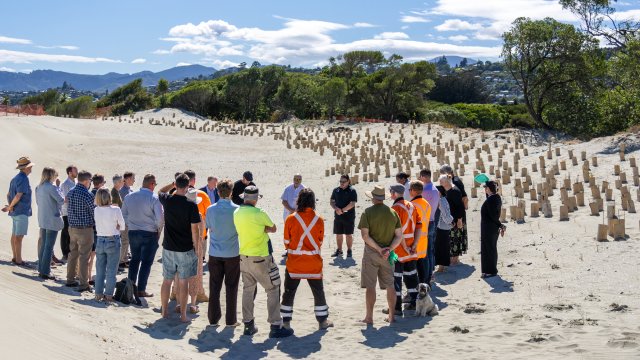New homes for local lizards at Tāhunanui Back Beach
08/10/2024 2:43am
More than 80 protected native lizards have been successfully captured and relocated prior to work starting on the contaminated sawdust site at Tāhunanui’s Back Beach.
An ecological assessment of the site, carried out in April, identified the presence of protected native lizard species the northern grass skink and katipō spiders living in the area. As a result, an environmental management plan was put in place to ensure the safety of these populations before any work began.
In collaboration with iwi representatives from Ngāti Kuia and Ngāti Rārua, local ecologists from Tonkin + Taylor captured and relocated 88 northern grass skinks. Each skink’s data, including sex, life stage, and measurements, was recorded before they were moved to a nearby site. Fortunately, no katipō spiders were found within the project area.
To safeguard the skinks during the works, lizard exclusion fencing has been installed around the site. In partnership with Nelmac, the team enhanced the skinks' new habitat by adding logs, log discs, and shrubland debris, creating an inviting and suitable new home for them. Further improvements, including native planting using locally sourced seeds, ongoing pest control, and weed management, are planned.
Once the contaminated material is removed, the work area will be restored to low-lying sand dunes, which will offer a more suitable habitat for lizards and katipō spiders. This restored area will be fenced to protect the new plantings and support the natural return of native wildlife. Ongoing monitoring will track the success of these restoration efforts.
Trucking the contaminated material out of the reserve began in late-September and is expected to be completed by mid-November.
For further information on the project visit: https://shape.nelson.govt.nz/t...


